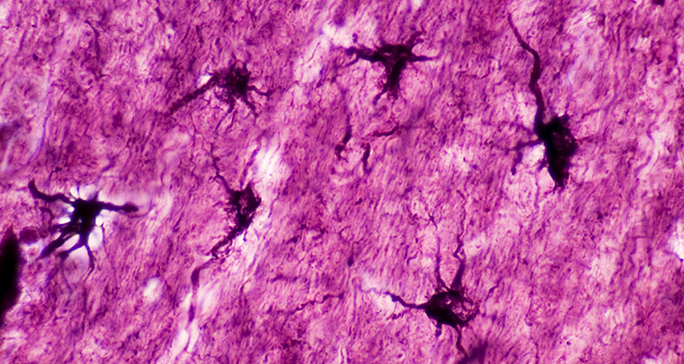- Diseases
- Acoustic Neuroma (16)
- Adrenal Gland Tumor (24)
- Anal Cancer (70)
- Anemia (2)
- Appendix Cancer (18)
- Bile Duct Cancer (26)
- Bladder Cancer (74)
- Brain Metastases (28)
- Brain Tumor (234)
- Breast Cancer (728)
- Breast Implant-Associated Anaplastic Large Cell Lymphoma (2)
- Cancer of Unknown Primary (4)
- Carcinoid Tumor (8)
- Cervical Cancer (164)
- Colon Cancer (168)
- Colorectal Cancer (118)
- Endocrine Tumor (4)
- Esophageal Cancer (44)
- Eye Cancer (36)
- Fallopian Tube Cancer (8)
- Germ Cell Tumor (4)
- Gestational Trophoblastic Disease (2)
- Head and Neck Cancer (14)
- Kidney Cancer (130)
- Leukemia (342)
- Liver Cancer (50)
- Lung Cancer (286)
- Lymphoma (278)
- Mesothelioma (14)
- Metastasis (30)
- Multiple Myeloma (100)
- Myelodysplastic Syndrome (60)
- Myeloproliferative Neoplasm (6)
- Neuroendocrine Tumors (16)
- Oral Cancer (102)
- Ovarian Cancer (178)
- Pancreatic Cancer (162)
- Parathyroid Disease (2)
- Penile Cancer (14)
- Pituitary Tumor (6)
- Prostate Cancer (150)
- Rectal Cancer (58)
- Renal Medullary Carcinoma (6)
- Salivary Gland Cancer (14)
- Sarcoma (238)
- Skin Cancer (302)
- Skull Base Tumors (56)
- Spinal Tumor (12)
- Stomach Cancer (66)
- Testicular Cancer (28)
- Throat Cancer (92)
- Thymoma (6)
- Thyroid Cancer (100)
- Tonsil Cancer (30)
- Uterine Cancer (86)
- Vaginal Cancer (18)
- Vulvar Cancer (22)
- Cancer Topic
- Adolescent and Young Adult Cancer Issues (22)
- Advance Care Planning (12)
- Biostatistics (2)
- Blood Donation (18)
- Bone Health (8)
- COVID-19 (360)
- Cancer Recurrence (120)
- Childhood Cancer Issues (120)
- Clinical Trials (628)
- Complementary Integrative Medicine (22)
- Cytogenetics (2)
- DNA Methylation (4)
- Diagnosis (240)
- Epigenetics (6)
- Fertility (62)
- Follow-up Guidelines (2)
- Health Disparities (14)
- Hereditary Cancer Syndromes (128)
- Immunology (18)
- Li-Fraumeni Syndrome (8)
- Mental Health (122)
- Molecular Diagnostics (8)
- Pain Management (62)
- Palliative Care (8)
- Pathology (10)
- Physical Therapy (18)
- Pregnancy (18)
- Prevention (940)
- Research (390)
- Second Opinion (78)
- Sexuality (16)
- Side Effects (616)
- Sleep Disorders (10)
- Stem Cell Transplantation Cellular Therapy (216)
- Support (408)
- Survivorship (330)
- Symptoms (182)
- Treatment (1794)
Diabetes and pancreatic cancer: What is the link?
BY Devon Carter
5 minute read | Published September 29, 2021
Medically Reviewed | Last reviewed by an MD Anderson Cancer Center medical professional on September 29, 2021
Insulin is a hormone produced by clusters of cells in the pancreas called islets. It helps our bodies use sugars from food for energy. When we’re active, we burn that energy and use up the sugar. But a poor diet and an inactive lifestyle can lead to an overload of sugar in the bloodstream and, with time, lead to insulin resistance.
“That means the insulin produced doesn’t work as efficiently as it normally would, so the pancreas goes into overdrive to produce more insulin,” says gastroenterologist Suresh Chari, M.D. Eventually, it fails to keep up and leads to Type 2 diabetes.
Although insulin resistance is most commonly caused by obesity, it can also be caused by pancreatic cancer. Additionally, pancreatic cancer prevents islets from producing insulin in response to insulin resistance. This can lead to Type 3c diabetes, which is caused by diseases of the pancreas, including chronic pancreatitis and cystc fibrosis, as well as pancreatic surgery.
“Type 3c diabetes is hard to distinguish from Type 2 diabetes,” Chari says. But fewer than 1% of patients with newly developed diabetes will be diagnosed with pancreatic cancer within three years.
“There’s a lack of awareness of this relationship, especially among primary care physicians,” says Anirban Maitra, M.B.B.S., a pathologist specializing in pancreatic cancer and co-leader of MD Anderson’s Pancreatic Cancer Moon Shot™.
Chari and Maitra are working to spread the word that there is a possible cause-and-effect relationship between diabetes and pancreatic cancer.
Monitoring for pancreatic cancer should start at the first sign of elevated sugar levels
Diabetes is diagnosed when a person’s A1C levels are 6.5% or higher. New-onset diabetes is the name for the three years following the first A1C test to show levels above 6.5%. During those three years, the risk of pancreatic cancer is higher than expected and then drops to the level of risk found in people with established diabetes.
But Chari stresses that the rise in A1C levels occurs months before a physician makes the diagnosis. Because they don’t want to scare patients, physicians don’t always tell patients when they have glucose or A1C levels that are in the diabetes range, he says. “Instead, they often say, ‘You have high blood sugar’ or ‘You have prediabetes,’ so patients don’t realize they have diabetes,” Chari says.
There’s also the hope the patient can reverse diabetes with an improved diet and more physical activity. “We want to give the patient the chance to reverse their course,” he says. “But that only works for patients that really go after it and put in the effort.”
Sometimes, patients see changes thanks to their improved lifestyle, but in rare cases, those changes are caused by pancreatic cancer.
Rising sugar levels despite weight loss may indicate pancreatic cancer
Retrospective studies have helped identify two signs that suggest the development of pancreatic cancer.
First, sugar levels rise rapidly. Chari says about 40% of these patients have normal sugar levels five years before diagnosis of diabetes. “When compared to typical Type 2 diabetes, it develops way faster when caused by the cancer,” he says. Patients with existing diabetes also see their numbers rise rapidly. The levels of sugars also spike higher than what’s typically seen in Type 2 diabetes.
Secondly, patients lose a significant amount of weight, despite their rising insulin levels. “I’ve seen patient lose 50 to 60 pounds in just a few months,” Chari says. But if the patient has changed their diet and level of physical activity, the weight loss may be mistakenly attributed to those efforts.
“Patients typically feel good around this time, so we’re patting them on the back for losing weight,” Chari says. But before applauding a patient’s effort, Chari advises physicians to question whether the patient has experienced results like that with previous lifestyle changes. If not, there may be something else happening.
“This weight loss in the face of rising sugar levels is something that happens with pancreatic cancer,” Chari says.
Using these indicators as a guide, Chari and Maitra aim to identify a subset of patients that are at high risk of developing pancreatic cancer. They hope this enables more interventions to be offered sooner, when there’s a better chance of successful treatment.
Earlier detection can lead to more pancreatic cancer treatment options
A patient’s age, fatigue level, health history and the stage of the pancreatic cancer all impact treatment options. Earlier detection – even only four or five months before diagnosis – increases the number of treatment options, Chari says.
“If we can turn the clock back a few months, we get a healthier patient who’s not fatigued and can undergo surgery and chemotherapy,” Chari says. These approaches can offer the most benefit to patients, but they’re often not options with later stage pancreatic cancer.
With earlier detection improving access to more effective treatments, Chari and Maitra hope to extend the lives of more patients with pancreatic cancer. This, in turn, can help improve the understanding of pancreatic cancer. “If we can get more people to surgery with earlier detection, we can have more clinical trials that can help us extend the lives of even more patients,” Chari says.
Clinical trials aim to establish pancreatic cancer screening guidelines
Although a link between new-onset diabetes and pancreatic cancer has been established, what physicians do with that information has yet to be determined.
“99% of the time, new-onset diabetes is just new-onset Type 2 diabetes,” Maitra says. “It doesn’t usually mean cancer.” But Chari and Maitra want to build awareness within the physician community. They also hope to develop screening guidelines.
Chari and Maitra are co-leading two clinical trials working toward developing such guidelines. They’re the first prospective trials in this area of study.
The first clinical trial is collecting blood for future studies on 10,000 patients with new-onset diabetes. This will be the first prospective study to define the risk of developing pancreatic cancer in new-onset diabetes.
A second trial will build on the first by identifying the subset of patients who have lost weight or whose A1C score is high who should be screened for cancer with a CT scan. If the first CT scan results are normal, patients receive a second scan three to nine months later.
The goal, Chari says, is to change practice by showing in the clinical trial that these patients benefit from early detection.
“If there’s one take-home message, it’s that this is rare, but it’s better to be aware of the connection between these anomalies than ignore the signs,” Maitra adds.
Request an appointment at MD Anderson online or by calling 1-877-632-6789.
Related Cancerwise Stories

It’s better to be aware of the connection between these anomalies than ignore the signs.
Anirban Maitra, M.B.B.S.
Physician & Researcher





